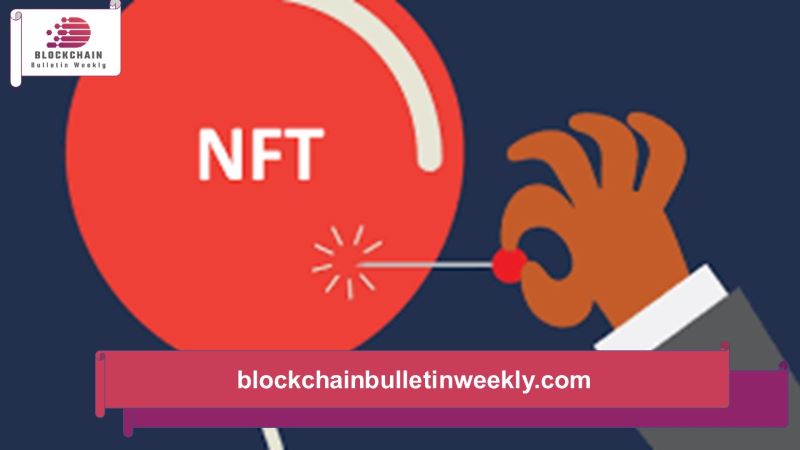The NFT bubble has reshaped the digital asset landscape, revealing its volatility and complexity. This article highlights three key lessons from the NFT bubble to help investors make more informed decisions in the evolving world of digital art.
What’s NFT bubble?
The term “NFT bubble” refers to a phenomenon in the non-fungible token (NFT) market characterized by a rapid surge in the prices and popularity of NFTs, followed by a subsequent decline or stabilization in value. This bubble typically arises when hype and speculation drive demand for digital assets, often leading to inflated prices that are not supported by underlying value or market fundamentals.
Characteristics of the NFT Bubble
The NFT bubble is characterized by rapid price increases, where digital artworks and collectibles see significant surges in value. Some NFTs have been sold for millions, gaining widespread media attention and sparking public interest.
This surge is often driven by speculative buying, with investors hoping that the prices will keep rising. Social media, celebrity endorsements, and viral marketing further fuel this excitement, drawing more participants into the market.
However, the bubble also leads to extreme market volatility, causing NFT prices to fluctuate wildly in short periods, which can result in impulsive buying decisions from investors.
Causes of the NFT Bubble
The NFT bubble can be traced back to several key causes. First, the rise of blockchain technology and decentralized finance created a new landscape for digital ownership and trading. This opened up exciting opportunities for artists, creators, and investors to explore the NFT market.
Another factor contributing to the bubble is cultural shifts. As digital art and collectibles gained wider acceptance as legitimate forms of expression, the popularity of NFTs surged. The intersection of technology and culture led to new ways for artists and creators to generate revenue.
Finally, the limited supply of NFTs played a crucial role. Many NFTs are unique or available in limited editions, which creates a sense of scarcity. This exclusivity appeals to collectors, driving up demand and contributing to the rapid rise in NFT prices.
Consequences of the NFT Bubble
The NFT bubble has led to a potential market correction, where unsustainable prices could cause significant losses for investors who purchased at inflated values.
Increased scrutiny from regulators and the public has emerged, raising concerns about the market’s legitimacy and transparency. This attention may result in more stringent regulations in the future.
The long-term sustainability of the NFT market remains uncertain. While some NFTs might retain value, investors must distinguish between genuine artistic worth and speculative assets.
Lesson 1 – Don’t Invest Without Understanding
Lesson 2 – Value Does Not Always Equate to Selling Price
Understanding Value vs. Price
The second lesson from the NFT bubble is recognizing the difference between the perceived value of an NFT and its actual selling price. Many investors mistakenly assumed that high prices reflected intrinsic value, leading to inflated expectations and major losses when the market corrected itself.
Perceived Value vs. Selling Price
The perceived value of an NFT is often shaped by market trends, hype, and emotional attachment. For example, a digital artwork may be highly valued due to the creator’s fame or the excitement surrounding the launch, regardless of its artistic quality or practical use.
On the other hand, the selling price is determined by what buyers are willing to pay at any given time, often influenced by speculation or FOMO (fear of missing out), rather than the NFT’s true value.
Market Influences
The NFT market was driven by speculation, with many investors purchasing NFTs based on the belief that prices would continue to rise, rather than assessing the asset’s inherent worth. This created a gap between the actual value of NFTs and their selling prices.
Additionally, the involvement of celebrities and influencers often inflated prices without increasing the actual value of the assets. NFTs linked to well-known figures, for instance, sold for massive amounts, even when the art or content was not particularly unique or valuable.
Assessing True Value
Investors should take the time to research and understand the true value of an NFT. Factors like rarity, the creator’s history, and the strength of the community can provide valuable insights into its genuine worth. Conducting due diligence helps distinguish between prices driven by hype and those grounded in actual value.
Market Corrections
The burst of the NFT bubble reminds investors that market corrections are inevitable. When speculation fades, assets priced far beyond their actual value will likely see sharp declines. Therefore, recognizing the true value of an NFT is crucial for long-term success.
Lesson 3 – Caution in the Face of Market Frenzy
The NFT bubble has taught us important lessons for investors. Understanding assets before investing, recognizing that price does not always reflect true value, and being cautious during market hype are crucial for success.
As the NFT landscape evolves, these insights will guide informed decision-making, as noted by Blockchain Bulletin Weekly.



